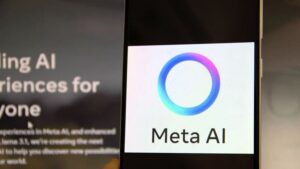Meta AI Solves Mathematics Challenges That Have Confounded Humans for More Than a Century

Meta’s AI Breakthrough in Mathematics
Introduction to AI in Problem Solving
Meta, the tech giant behind platforms like Facebook and Instagram, has announced a significant achievement with its AI technology. According to their researchers, this innovative AI system can solve complex mathematical problems that have stumped mathematicians for more than a century. This breakthrough highlights the growing role of AI in various fields, particularly in mathematics and science.
Understanding Lyapunov Functions
A key focus of Meta’s AI revolves around mathematical tools known as Lyapunov functions. These functions play a crucial role in understanding the stability of different systems over time. Named after the renowned mathematician Aleksandr Lyapunov, these functions help determine if a system’s behavior remains predictable.
The Challenge of the Three-Body Problem
One of the most infamous examples where Lyapunov functions are applied is the three-body problem in celestial mechanics. This problem involves predicting the motion of three celestial bodies, such as planets or stars, influenced by their mutual gravitational forces. Understanding the dynamics of these bodies is incredibly complex due to the intricate gravitational interactions at play.
Key Aspects of the Three-Body Problem
- Historical Significance: The three-body problem has been a topic of interest since the time of Isaac Newton, and many mathematicians have attempted to find solutions.
- Prediction Challenges: Unlike the simple two-body problem, where gravitational interactions are straightforward, the three-body scenario results in chaotic behavior that is difficult to predict over long periods.
- Applications: Solutions to the three-body problem can have implications in various fields, including astronomy, physics, and space exploration.
How Meta’s AI Works
Meta’s AI employs advanced algorithms that analyze the stability of systems using Lyapunov functions. By utilizing vast amounts of historical mathematical data and sophisticated computational power, this AI can explore potential solutions that human mathematicians may overlook.
Benefits of AI in Mathematics
- Speed: AI can process and analyze mathematical functions at speeds unattainable by human researchers.
- Creativity: It can provide novel solutions to longstanding problems, pushing the boundaries of current mathematical knowledge.
- Accessibility: By simplifying complex concepts, AI could help democratize mathematics, making it more accessible to individuals without a formal background in the subject.
Implications for Future Research
Meta’s advancements raise exciting possibilities for future mathematical research. If the AI can consistently solve problems that have historically been challenging, this could open new pathways for scientific exploration and discovery.
Potential Areas of Impact
- Engineering: Improved solutions for stability in engineering designs, leading to safer structures.
- Physics: Insights into cosmic phenomena, emphasizing the relationship between motion and gravitational influences.
- Robotics: Enhanced control systems that rely on stability analysis, aiding in the development of more autonomous machines.
Final Thoughts
The work being done by Meta showcases the power of AI in revolutionizing mathematics. As researchers continue to refine these technologies, we can expect to see even greater contributions to understanding complex systems in the universe, enhancing both theoretical knowledge and practical applications across various fields. This development reinforces the importance of interdisciplinary cooperation between computer science and mathematics, paving the way for future innovations.





